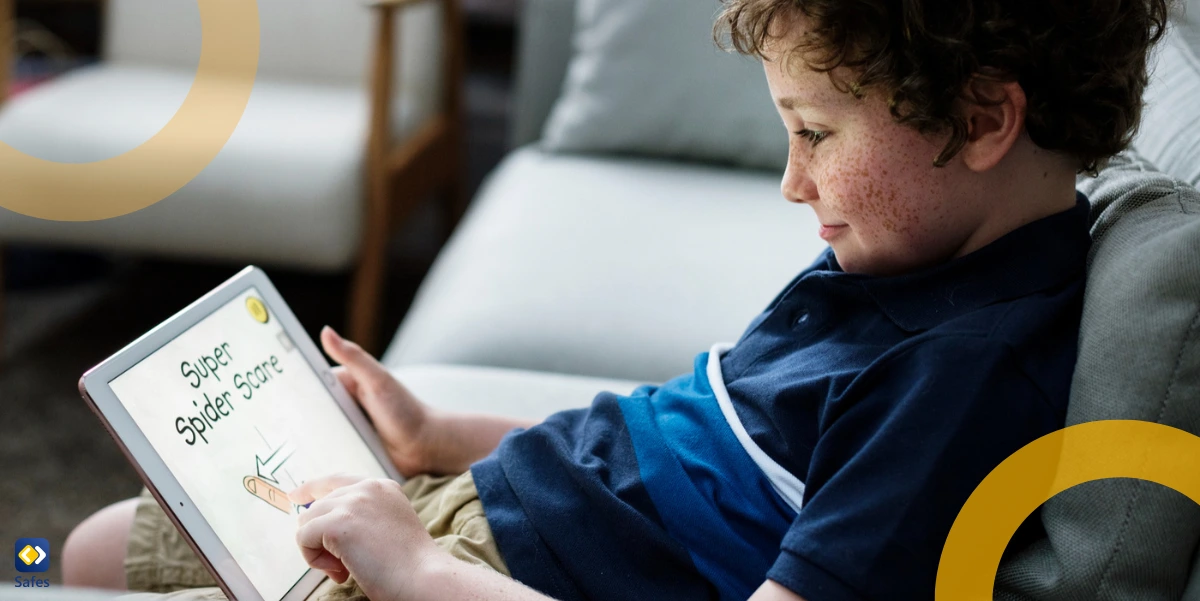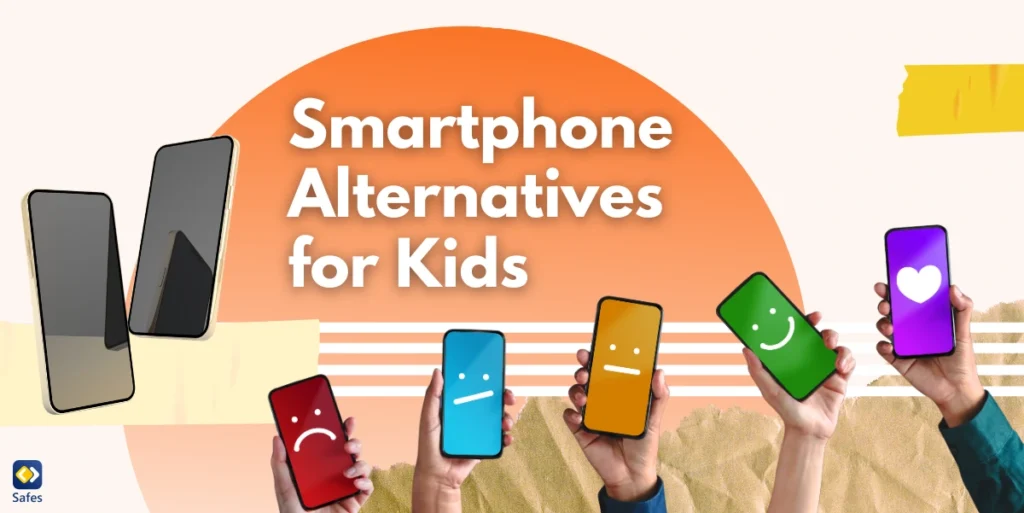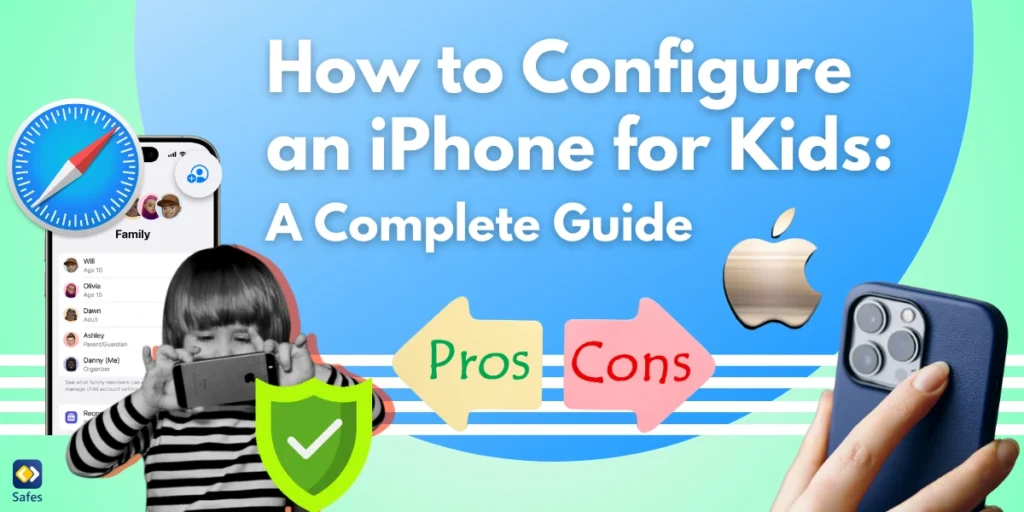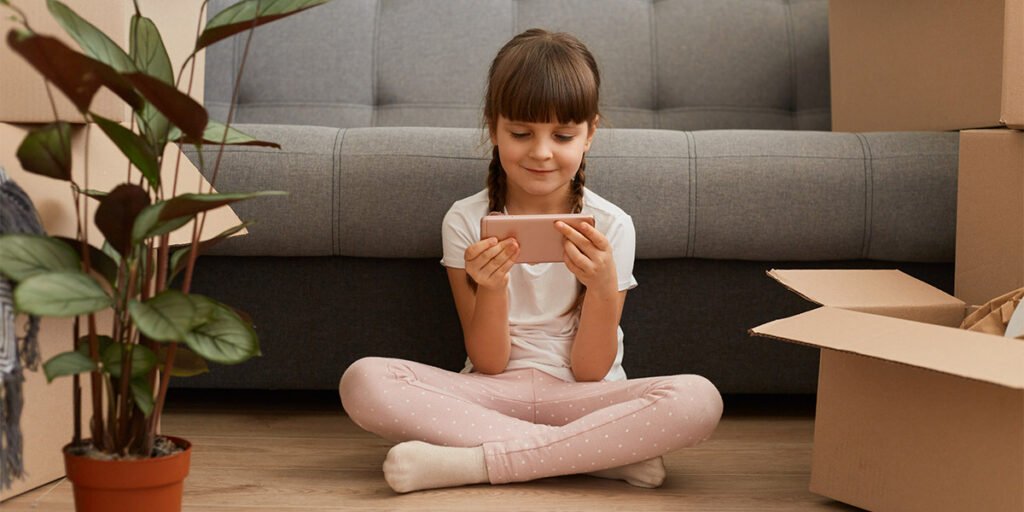Smartphones are everywhere, and it’s easy to see why many kids are eager to have one. However, the growing concern about children using smartphones at an early age is valid. Smartphones come with potential risks, such as screen addiction, exposure to inappropriate content, and the overwhelming pressure of social media. The instant access to the internet, social media apps, and the inability to regulate screen time may lead to various behavioral and emotional challenges for kids.
Download and Start Your Free Trial of the Safes Parental Control App
So, what’s the alternative? If you’re wondering “What cell phone alternatives are appropriate for my child?”, you’re in luck. Fortunately, there are numerous smartphone alternatives for kids that provide safer options to keep your children connected, entertained, and learning while reducing the downsides of full smartphone use.
Why Consider Smartphone Alternatives for Kids?
There are many reasons why parents might hesitate to give their children a full-fledged smartphone. As most kids use their devices for school and social activities, the worry about excessive screen time becomes real. Studies show that excessive screen time negatively affects a child’s development, leading to worse academic performance, sleep disorders, and mental health conditions.
Instead of handing over a smartphone, there are other alternative devices for kids that offer both security and functionality. These devices aim to provide a balance between technology and developmental needs, making them a much safer and smarter option. Devices like dumb phones for kids or feature phones are excellent starting points for parents looking to maintain communication with their children without all the risks associated with smartphones.
Key Features to Look for in Kid-Friendly Devices
When choosing a device for your child, it’s important to prioritize features that ensure safety, engagement, and education. Here are the key features to look for:
- Safety: The most important feature is parental controls. Look for devices that allow you to set limits on screen time, filter content, and control access to internet browsers, app stores, and social media apps.
- Durability: Kids can be tough on their devices, so durability is crucial. Choosing a device made with sturdy materials or one that comes with a protective case can help prevent damage from drops, spills, or rough handling.
- Age-Appropriateness: It’s essential to match the device with your child’s age. Younger children may need simpler gadgets that are easier to navigate, while older kids may benefit from more interactive devices.
- Educational Value: Opt for devices that provide learning opportunities. Whether it’s through apps, games, or music, the best smartphone alternatives for kids should stimulate creativity, encourage problem-solving, and provide engaging content that promotes learning.

Top Smartphone Alternatives for Kids
Here are some of the best smartphone alternatives for kids that offer various features tailored to children’s needs:
Basic Phones (Feature Phones)
Examples: Nokia 3310, Jitterbug Flip.
These simple phones are great for younger children who only need basic functions like calling and texting. With no internet access or social media apps, they provide a simple communication tool without distractions. Parents who want a device for phone calls and basic emergency communication should consider these affordable options.
Best For: Younger kids who don’t need internet access or social media, but still need a way to stay connected with family.
Kid-Specific Smartwatches
Examples: GizmoWatch, TickTalk, Xplora, Gabb Watch.
If you’re looking for an alternative device for kids besides smartphones, try smartwatches. Smartwatches or GPS watches designed for kids come with several unique features like GPS tracking, video calls, step counters, and two-way calling. These devices allow parents to track their child’s location and stay in touch without the risks associated with smartphones. They also often have pre-set contacts and are free from internet browsing and social media access.
Best For: Parents who want to monitor their child’s whereabouts while maintaining communication through phone calls and texting.
Tablets for Kids
Examples: Amazon Fire Kids Edition, iPad with parental controls.
Tablets can be an excellent option for older kids who need access to educational apps, books, or videos for learning. These devices can also be entertaining when loaded with games, music, and audiobooks. Parents can customize settings with built-in (Android) parental controls, allowing them to limit screen time and filter content.
Best For: Older children who need access to educational apps and entertainment, all while staying within safe boundaries.
MP3 Players or Audio Devices
Examples: iPod Shuffle, Yoto Player.
For children who love music or storytelling, an MP3 player or audio device is a fantastic alternative. These devices offer screen-free audio entertainment, with the added benefit of playing audiobooks, podcasts, and music. These devices help limit exposure to screens while still offering entertainment.
Best For: Kids who enjoy music, audiobooks, or storytelling, without the need for a smartphone or internet access.
Handheld Gaming Consoles
Examples: Nintendo Switch Lite, LeapFrog Epic Academy.
Handheld gaming consoles can provide an engaging and fun experience for children while keeping them safe from internet browsers and social media apps. These consoles often include educational games, making them an excellent option for interactive learning while limiting distractions from the internet.
Best For: Kids who enjoy gaming but need boundaries regarding internet access and social media.
Hybrid Devices (Communication + Entertainment)
Examples: Pinwheel Phone, Gabb Phone.
Devices like the Pinwheel phone combine phone calls and texting with limited entertainment options. These phones typically come without access to social media apps or the internet, offering peace of mind to parents who want to keep their children in touch with family but avoid the risks of full smartphone use.
Best For: Pre-teens who need communication features and limited entertainment, but not the distractions of social media.
Tips for Choosing the Right Device for Your Child
When selecting the right smartphone alternative for kids, consider the following tips:
Consider Age and Maturity
The age of your child plays a significant role in determining which device is suitable. Younger children might benefit from simpler phones with limited functionality. Meanwhile, older kids may require more sophisticated options like a tablet for kids or handheld gaming console.
Evaluate Purpose
What’s the purpose of the device? If it’s for educational use, look for devices like tablets that support learning apps. If it’s for communication, simpler devices like the Gabb phone might suffice. Determine whether you need a call and text device or something with more diverse features like entertainment and tracking.
Set Clear Boundaries
Be sure to set rules for how much time your child can spend on their device. Implementing screen time limits and assigning certain hours for tech-free activities is important for healthy technology usage.
Involve Your Child
Discuss the decision with your child, ensuring they understand the reasoning behind the choice and are comfortable with the device. Allowing them to have a say can make the process smoother.
Balancing Technology with Offline Activities
While technology can be an important educational tool, it’s essential to balance it with offline activities. Outdoor play, reading, and hobbies are excellent (practically) free smartphone alternatives for kids, offering not only a chance for physical activity but also opportunities for developing social skills and creativity. Encouraging your child to participate in these activities—whether it’s playing in the park, going on a family hike, or having a game night—helps create cognitive development in a way that screens cannot.
Parents should also create a family environment where technology use is monitored, and tech-free zones are established, such as during meal times or before bed. Modeling healthy technology habits is crucial. If you’re constantly on your phone, your child will likely follow suit. Establishing a family rule for limited screen time and encouraging physical activities will help your child maintain a well-rounded lifestyle.

How Safes Parental Control App Can Help
If you’re hesitant about purchasing a new device for your child, you can still turn your existing smartphone into a safer, more controlled environment with Safes, an easy-to-use parental control app. Available for both Android and iOS devices, Safes provides all the tools you need to monitor and manage your child’s device usage, even if you decide to let them use a smartphone.
By installing Safes on your child’s smartphone, you can set screen time limits, block access to inappropriate content, track their location, and restrict access to certain apps or social media platforms. This makes it possible to create a secure digital space on a device that might otherwise be full of distractions or risks, like the access to social media or unrestricted internet browsing.
Take advantage of Safes’ free trial to start managing your child’s device usage and ensure their safety today.
Conclusion
Choosing the right smartphone alternative for your kids is about finding a balance between safety, education, and entertainment. With a range of cell phone alternatives for your child, from feature phones to handheld gaming devices, you can ensure your child stays connected and engaged without the risks associated with smartphones. Prioritize safety, set clear boundaries, and use tools like Safes to monitor and control device usage, allowing your child to thrive in a digital world while maintaining healthy offline habits.
Your Child’s Online Safety Starts Here
Every parent today needs a solution to manage screen time and keep their child safe online.
Without the right tools, digital risks and excessive screen time can impact children's well-being. Safes helps parents set healthy boundaries, monitor activity, and protect kids from online dangers—all with an easy-to-use app.
Take control of your child’s digital world. Learn more about Safes or download the app to start your free trial today!




